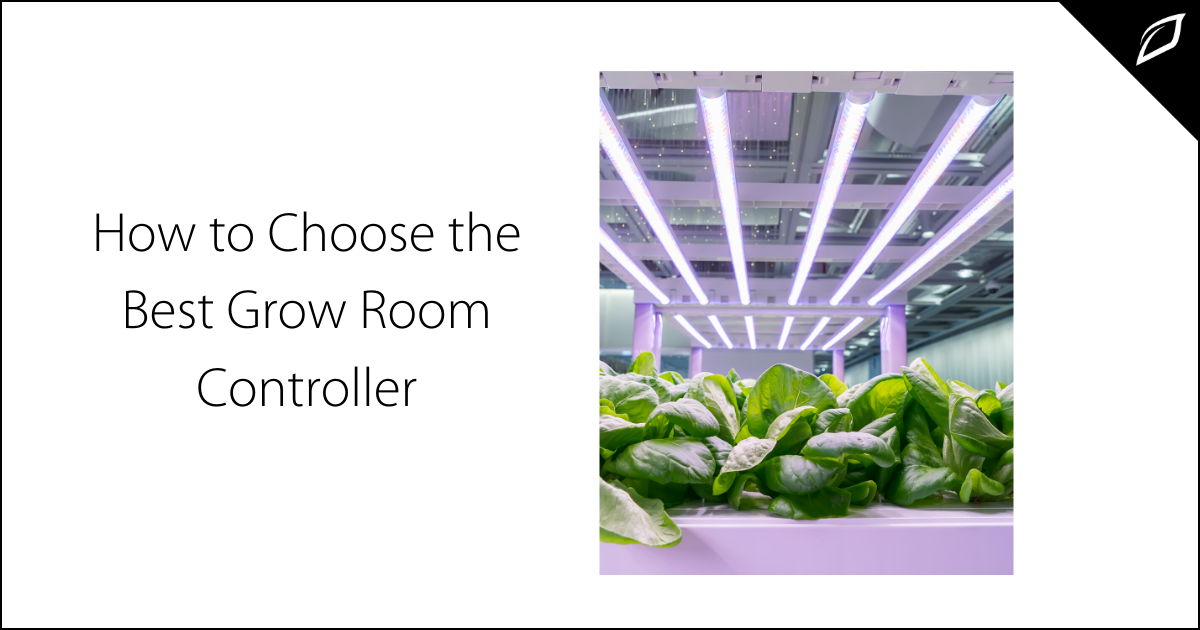How to Choose the Best Grow Room Controller
Expanding an indoor farm from a single small room to multiple grow rooms can create—for lack of a better expression—some growing pains. Entrepreneurs...
2 min read
 Ted Tanner, CEO and Co-Founder
:
Feb 6, 2018 8:48:00 AM
Ted Tanner, CEO and Co-Founder
:
Feb 6, 2018 8:48:00 AM


The technology media has been enamored with “smart” solutions lately. Smart cities generate data to better manage pollution, crime, and traffic. Smart homes lean on wireless technologies and automation to simplify daily life. Smart cars may soon navigate the highways with minimum human intervention.
Then there are smart farms, an emerging agricultural phenomenon that promises to drive improved yields with better land management, positive environmental outcomes, and bottom-line benefits for the grower.
In the big picture, smart agriculture draws from three interconnected fields of technology: management information systems, precision agro management tools, and advances in automation and robotics. When combined, these technologies can deliver a more efficient and effective means of cultivating crops, delivering higher yields with more targeted efforts.
Under this broad umbrella, growers can implement a number of specific technologies.
The Internet of Things, or IoT, is a key smart farm enabler. Farm equipment can be rigged with a range of sophisticated sensors to track and respond to changes in the soil, optimize water usage, regulate fertilizer, and generate valuable metrics on the efficiency of operations.
“The aim of the agriculture sector is to optimize processes and uses of resources and efficient use of existing arable land. The Internet of Things can enable all that. It can increase production, but it can also increase the level of quality of agriculture,” said a recent Forbes report.
IoT, in turn, relies on wireless technologies as the transport mechanism to unify and deliver this payload of valuable data. An article in The Economist describes a wireless-enabled farm, one in which: “Moisture sensors planted throughout the nut groves keep track of what is going on in the soil. They send their results to a computer in the cloud (the network of servers that does an increasing amount of the world’s heavy-duty computing) to be crunched. The results are passed back to the farm’s irrigation system—a grid of drip tapes … that are filled by pumps.”
In this way, wireless connectivity forms the backbone by which the intelligence of the smart farm is shared and put into effect.
Supported by wireless connectivity, growers can implement precision agro-management tools. Data can be used to manage irrigation in real time, control sunlight, tend to the needs of the soil, and manage pest control.
From all of this high-tech talk, it might be easy to walk away with the notion that smart farming comes with a big price tag, requiring a level of investment that puts it out of reach for smaller growers.
In fact, recent advances have brought to market a range of technologies—from ag sensors to data management tools—at price points well within reach not just for larger industrials farms but for smaller independent growers as well. And because of the ways these tools boost efficiency, increase yields, and reduce crop loss, incremental investments in technology are making startup farms increasingly profitable.
In the long run, smart farming is a necessary remedy for a world in which agriculture will need to feed 9.6 billion people by 2020. That’s going to require a 70 percent increase in food production, by some estimates. Food farmers are pushing hard for tech solutions that will help them meet that need, and cannabis growers could stand to reap the windfall of that investment. The rapid rise of these technologies promises to give a timely boost to this nascent industry, as startup growers seek to maximize potential of their expanding operations.

Expanding an indoor farm from a single small room to multiple grow rooms can create—for lack of a better expression—some growing pains. Entrepreneurs...

Last month, the talented team at Growlink convened in Las Vegas for the most significant cannabis show in the states. Organized by the editors of...

Hailing from the great Pacific Northwest, Jim Stephens embodies the essence of the region. His love of the outdoors and passion for farming...